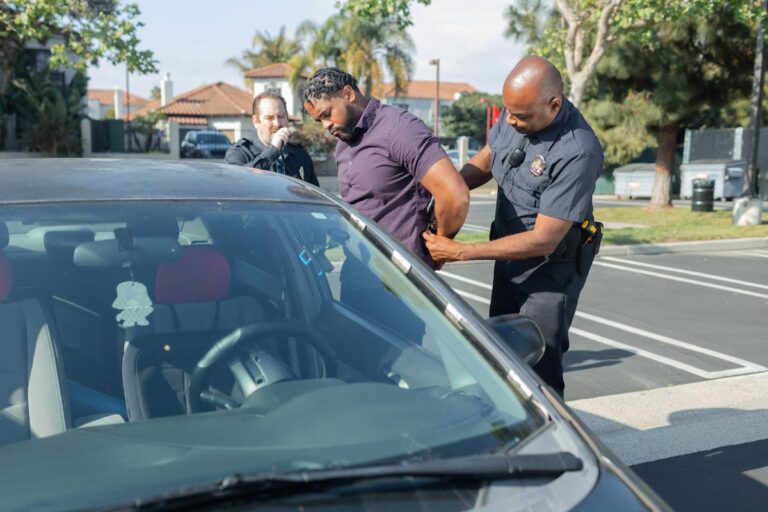Is It Illegal to Drive High
Driving high is illegal due to its impairment of cognitive abilities and motor skills, leading to slower reaction times and increased accident risk. The legal consequences of this act vary, including fines to imprisonment. As more states legalize cannabis, understanding the specifics of these laws and their enforcement becomes crucial.
Understanding the Definition of ‘High’
The term ‘high’ refers to an altered state of consciousness, primarily caused by consuming cannabis. The psychoactive effects, including changes in perception, mood, and cognition, are attributed to delta-9-tetrahydrocannabinol (THC), a compound in cannabis. THC disrupts normal brain function by binding to cannabinoid receptors. This disruption can lead to cannabis dependency, marked by a compulsion to use cannabis despite negative consequences. The altered brain function can impact cognitive abilities, emotional regulation, and mental health. In the context of driving, being ‘high’ can impair safe vehicle operation, leading to significant legal and safety issues.
How Cannabis Affects Driving Skills
Cannabis significantly affects driving skills, impairing perception and response time which compromise public safety. Real-world driving performance suffers due to these effects. Legal implications arise from driving under cannabis influence.
Understanding Cannabis’s Impact
Cannabis consumption can impair driving skills, as studies link marijuana use with decreased motor coordination, reaction time, and decision-making. Cannabis, used for recreational and medicinal purposes over centuries, has both therapeutic and psychoactive effects. The psychoactive compound, THC, alters sensory perception, impairs short-term memory and reduces concentration, affecting safe driving. While medical marijuana use is rising for managing chronic pain and nausea, it can still impair driving abilities. Responsible cannabis use, particularly while driving, is crucial to prevent impaired driving consequences. This underpins discussions on the legality of driving under the influence of cannabis.
Impaired Perception and Response
Cannabis use significantly impairs driving skills, compromising traffic safety. Its effects on cognitive and psychomotor functions alter the driver’s perception of distance, speed, and time, which are vital for safe driving.
Furthermore, cannabis-induced impairment slows reaction times, posing a risk in situations requiring immediate response to road events. This delayed reaction may lead to severe accidents, threatening traffic safety.
Additionally, the link between substance addiction and driving is significant. Regular cannabis users may struggle to abstain while driving, possibly underestimating the risks of driving under the influence. This behavior endangers both the user and other road users.
Legal Consequences of DUI
Legal consequences for DUI are tied to the critical impact of substances like cannabis on driving skills. Similar to alcohol DUI, penalties for drug-impaired driving are serious and vary based on the level of impairment, previous offenses, and resulting harm. Common punishments include fines, license suspension, compulsory substance abuse counseling, and potentially, imprisonment. Long-term impacts of DUI convictions can include higher insurance premiums and job-related repercussions.
Law enforcement employs sobriety checkpoints to enforce DUI laws, despite ongoing legal debates. These checkpoints, aimed at identifying and arresting impaired drivers, act as a deterrent for DUI and help ensure road safety. The US Supreme Court has deemed these checkpoints legal, putting public safety above minor privacy intrusions.
The rigorous DUI penalties highlight the need to understand the substantial influence of substances like cannabis on driving and the importance of sober driving.
State Laws Regarding Drugged Driving
Every U.S. state has specific laws and penalties for drugged driving, which includes both illicit substances and the influence of prescription drugs. These laws account for the potential impairment from medications, such as effects on judgement, reaction time, and motor skills. The combination of different medications or mixing with alcohol can intensify these effects, leading to stringent penalties.
Roadside sobriety tests, including physical examinations, behavioral observations, and chemical assays like breath, blood, or urine analysis, are used to enforce these laws. State laws consistently recognize drugged driving as a public safety threat, regardless of the substance involved. Penalties may involve substantial fines, driving restrictions, compulsory drug education programs, or imprisonment.
Federal Laws on Marijuana and Driving
Federal law enforces a zero-tolerance policy on driving under the influence of marijuana, irrespective of state laws on marijuana decriminalization or legalization. Under the Controlled Substances Act, manufacturing, distributing, dispensing, or possessing marijuana with intent to distribute or dispense is illegal, which encompasses driving under its influence. Penalties include potential imprisonment, hefty fines, and possible loss of property. Although federal enforcement often targets larger drug trafficking operations rather than individual users, the risk of federal charges remains. Understanding these laws is crucial for drivers to evade potential legal issues.
DUI Vs Dwi: What’s the Difference?
In the realm of impaired driving legalities, DUI (Driving Under the Influence) and DWI (Driving While Intoxicated) are common terms. They often interchange but hold distinct meanings depending upon jurisdiction. Each signifies a unique violation with varying legal and financial implications. Understanding the difference between DUI and DWI involves analyzing their definitions, related penalties, and each charge’s legal consequences.
Understanding DUI and DWI
Distinguishing DUI (Driving Under the Influence) from DWI (Driving While Intoxicated) is crucial for understanding impaired driving. DUI typically refers to driving impaired by drugs or alcohol, while DWI indicates exceeding legal blood alcohol limits. Jurisdictional differences can reverse definitions.
DUI prevention strategies reduce impaired driving incidents. These strategies encompass sobriety checkpoints, public education campaigns, ignition interlock devices for repeat offenders.
Substance abuse counseling, addressing root cause of abuse, fosters healthier habits, coping mechanisms, reducing impaired driving risks. Awareness of these nuances is vital for understanding driving under the influence.
Legal Consequences: DUI Vs DWI
The legal repercussions for DUI (Driving Under the Influence) and DWI (Driving While Intoxicated) differ based on jurisdiction-specific laws. DUI typically relates to impairment from alcohol or drugs, whereas DWI often pertains to alcohol-induced impairment. However, some jurisdictions may use these terms interchangeably or assign alternate definitions. Roadside sobriety tests assess a driver’s physical and cognitive capability to operate a vehicle safely, and failure may result in DUI or DWI charges. The interpretation and enforcement of DUI and DWI depend on local jurisdictions, leading to varied legal consequences. This reflects how each jurisdiction perceives the severity of these offenses.
Difference in Penalties
Understanding penalty disparities between DUI (Driving Under Influence) and DWI (Driving While Intoxicated) charges provides insight into jurisdictional views on these offenses. Penalties vary based on jurisdictional legal definitions and offense circumstances. DUI penalties are typically less severe, applied when a driver’s blood alcohol level is lower. Conversely, DWI charges, associated with higher alcohol levels, often result in harsher penalties. In some jurisdictions, DUI and DWI are interchangeable, causing confusion.
Penalty ranges for DUI and DWI offenses include fines, community service, and mandatory jail time, with multiple offenses increasing penalty severity. DWI punishments are generally harsher due to perceived higher public safety risks. Regardless of terminology, DUI and DWI penalties aim to deter impaired driving due to its significant dangers. The exact penalty differences largely depend on the specific legal landscapes of jurisdictions. This text is optimized for NLP and semantic search engines, using relevant keywords, avoiding redundancy, and prioritizing clarity and context.
Testing for Drug Impairment
Determining drug impairment in drivers is a multifaceted task, surpassing standard alcohol breathalyzer tests. Methods like roadside saliva tests exist to detect psychoactive substances including marijuana, cocaine, and methamphetamines, which can significantly alter driving capability.
However, drug impairment tests present complexities, unlike alcohol breath tests:
- Having a drug in the system doesn’t necessarily imply impairment.
- Detection windows vary between drugs, spanning from hours to days.
- The relationship between drug amount and impairment level isn’t always direct.
To combat these challenges, law enforcement agencies employ drug recognition experts (DREs). DREs are officers skilled in identifying drug-induced impairment signs in drivers. This approach aims to ensure road safety for all users through advanced drug detection techniques.
Legal Consequences of Driving High
Legal consequences of drug-impaired driving are severe. In law, it’s a serious offense. Penalties aim to deter such behavior and boost public safety.
Defending this offense is complex, requiring deep legal knowledge, evidence analysis skills, and persuasive arguing abilities. Defendants risk fines, license suspension, or imprisonment, depending on case severity and local laws.
To tackle the root cause, courts can mandate legally enforced substance rehab. This helps offenders beat drug addiction and re-enter society responsibly, reducing drug-related driving incidents and societal burden.
Marijuana and Its Impact on Insurance
Marijuana legalization has led to complexities in car insurance policies due to the perceived risk of drug-impaired driving. This has resulted in rate increases by some insurers. Furthermore, policy cancellations are occurring if drivers test positive for marijuana. The effects include:
- Higher premiums: To mitigate marijuana-related risks, insurers may escalate rates.
- Policy termination: Insurers might cancel policies of marijuana-positive drivers, exposing them to potential accident costs.
- New insurance difficulties: Cancelled policy drivers may struggle to secure new coverage due to their record.
This scenario emphasizes the need for more research to comprehend marijuana’s impact on driving and construct fair, effective insurance policies.
Safety Risks Associated With Driving High
Driving under marijuana’s influence presents significant safety risks, including impaired motor functions, delayed reaction time, and poor decision-making, which can lead to severe penalties and unfortunate incidents. The psychoactive properties of marijuana negatively affect critical driving skills. Legal and personal implications of such actions are substantial and severe.
Impaired Driving Dangers
Navigating traffic requires undivided attention and sound judgment, both compromised when influenced by marijuana. The significant safety risks of driving high necessitate effective roadside testing and public awareness. Marijuana impairs motor skills, reaction times, and decision-making, increasing accident risks.
Key risks of driving high include:
- Motor coordination reduction: Marijuana impairs motor skills, complicating vehicle control.
- Reaction time delay: Marijuana influence slows reaction, escalating accident risk.
- Decision-making impairment: Marijuana impacts decision-making, leading to risky driving behavior.
Mitigation strategies like roadside testing and public awareness campaigns are crucial. Understanding impaired driving dangers can prevent accidents and save lives. Continued investment in these strategies is essential for road safety.
High Driving Consequences
Analyzing the risks of marijuana-impaired driving is crucial due to its increasing involvement in traffic accidents. THC, marijuana’s psychoactive component, can hinder motor skills, reaction time, and judgment, enhancing accident risks.
The National Highway Traffic Safety Administration’s study shows that drivers with THC are almost twice as likely to partake in fatal crashes, highlighting the grave safety threats of driving under marijuana influence.
To tackle this, prevention efforts are vital. Educational campaigns on high-driving dangers, stringent law enforcement, and the creation of dependable roadside drug impairment tests are key. Emphasizing substance abuse treatment through policies over punitive actions can also make a substantial impact.
Myths and Misconceptions About Driving High
Many myths exist about marijuana’s effects on driving, fostering a false sense of security and legality. The belief that cannabis tolerance negates driving impairment is unfounded. Scientific evidence disputes this.
The idea that roadside marijuana impairment tests are unreliable or easy to dupe is also misleading. Law enforcement agencies employ advanced detection techniques for THC, cannabis’s main psychoactive component. These tests focus on recent use, enhancing their accuracy.
To dispel further misconceptions:
- Driving high is not safer than driving drunk: Both impair cognitive and motor skills, making neither safe nor legal.
- THC’s effects vary: True, but driving under its influence remains unsafe.
- Marijuana use doesn’t cause accidents: Research counters this, indicating a connection between marijuana use and increased accident risk.
Changing Attitudes Towards Driving High
Societal and legal changes have transformed attitudes towards marijuana-influenced driving. This shift is due to public opinion changes and cultural impacts. Public views now increasingly accept marijuana use, while emphasizing its potential risks when driving. Cultural factors – media representation, celebrity endorsements and marijuana normalization – have shaped this perspective, instigating discourse focusing on safety and responsibility.
Tips for Safe and Responsible Use
For safe and responsible marijuana use, particularly considering driving, understanding and following guidelines are crucial. Primarily, responsible intake and secure storage are important.
To ensure safety and legality, consider these three tips:
- Awareness: Continually update your knowledge on local marijuana laws and implications of driving under its influence.
- Preparation: Prior to marijuana consumption, secure a sober driver or pre-arrange alternate transport services like rideshare or public transit.
- Storage: When driving, store marijuana products securely and inaccessible, preventing accidental consumption and deterring use while travelling.
Frequently Asked Questions
Can Medical Marijuana Patients Legally Drive After Consuming Their Prescribed Dosage?
Prescription regulations permit medical marijuana use, but driving post-consumption is typically illegal due to potential motor skills and reaction times impairment. Patient responsibilities include safety, making it crucial to avoid driving under influence, even with prescribed marijuana.
How Does the Body Metabolize THC and How Long Does It Stay in Your System?
The liver metabolizes THC, resulting in detectable metabolites. These metabolites, observable through specific THC detection techniques, can remain in the body for weeks. During this time, they might affect coordination and cognitive abilities.
Are There Any Proven Methods to Sober up Quickly From Marijuana?
No scientifically confirmed methods exist for rapid THC detoxification. The THC elimination rate hinges on metabolism, individual tolerance, and usage frequency.
What Is the Role of Marijuana Dispensaries in Educating About Drugged Driving?
Dispensaries hold a crucial role in drugged driving education, supplying precise information about effects, risks, and the significance of responsible marijuana use, thereby reinforcing impaired driving education.
How Does Law Enforcement Approach Repeat Offenders of Driving While High?
Law enforcement employs stringent protocols to handle repeat offenders driving under substance impairment. These offenders face serious penalties, including potential incarceration, to inhibit such perilous conduct.







